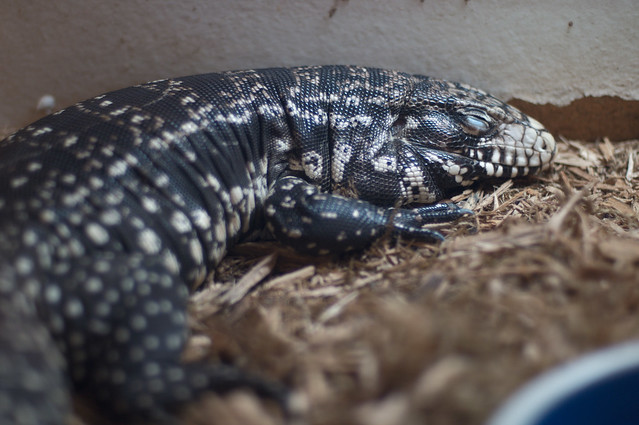
Flying Gecko Care: Tips for Keeping Your Lizard Happy and Healthy
Flying geckos, also known as parachute geckos, are fascinating creatures that make unique and beautiful pets. If you’re considering getting a flying gecko or already have one, it’s important to understand their specific care needs to ensure their well-being. In this article, we will cover the essential aspects of flying gecko care to help you create a suitable environment for your scaly friend.
Housing
Flying geckos require spacious enclosures to allow them to glide and climb. A vertical terrarium or vivarium is ideal, as it provides ample vertical space for their arboreal lifestyle. A 20-gallon tank for a single gecko is a good starting point, but consider upgrading to a larger enclosure as your pet grows.
Ensure the enclosure has plenty of branches, vines, and plants for climbing and hiding. Flying geckos also appreciate a small water dish for drinking and to help maintain humidity levels.
Temperature and Lighting
Maintaining the right temperature gradient is crucial for your flying gecko’s health. The warm end of the enclosure should be around 80-85°F (27-29°C), while the cool end should be around 75-80°F (24-27°C). Use a thermometer to monitor the temperature and adjust accordingly.
Provide a heat source, such as an under-tank heater or heat lamp, to create the necessary warmth. Supplemental UVB lighting is also beneficial to meet their vitamin D needs and aid in calcium absorption.
Substrate and Humidity
When it comes to substrate, providing a mix of coconut fiber and orchid bark works well for flying geckos. This combination helps retain moisture while providing a soft and comfortable surface for climbing. Avoid using substrates that may cause impaction, such as sand or gravel.
Flying geckos thrive in a moderately humid environment. Aim for a humidity level of 50-70% by misting the enclosure daily and using a hygrometer to monitor the humidity levels. Adequate humidity is essential for shedding and overall health.
Diet and Feeding
Flying geckos are insectivores, so their primary diet consists of live insects. Offer a variety of appropriately sized insects, such as crickets, mealworms, and small roaches. Gut-load the insects with nutritious foods before feeding them to your gecko.
Feed your flying gecko 3-4 times a week, providing an amount of food they can consume in 15-20 minutes. Dust the insects with a calcium and vitamin supplement to ensure they receive the necessary nutrients.
Maintenance and Handling
Maintaining a clean enclosure is vital for your flying gecko’s health. Spot clean any waste or uneaten food daily and perform a deep clean every month. This involves removing all decor, cleaning the enclosure with reptile-safe cleaners, and replacing the substrate.
While flying geckos are generally docile, they can be skittish. Allow them time to acclimate to their new environment before attempting to handle them. When handling, support their entire body and avoid squeezing or restraining them. Ensure your hands are clean and free of any substances that may harm your gecko.
Conclusion
Caring for a flying gecko requires providing a suitable environment that mimics their natural habitat. Proper housing, temperature, lighting, substrate, humidity, diet, and handling are all essential aspects for their overall well-being. By following these guidelines and dedicating time to understand your gecko’s individual needs, you can create a happy and healthy life for your flying gecko companion.
Keep Reading

The Easiest Lizard to Take Care of: A Guide for Lizard Caretakers
When it comes to keeping lizards as pets, some species require more time, effort, and expertise than others. If you're new to lizard care and looking for an easy-to-maintain companion, we've got just the lizard for you!

Argentine Black and White Tegu Care: Essential Tips for Lizard Owners
As a lizard lover, you might have found yourself fascinated by the Argentine Black and White Tegu. These impressive reptiles make incredible pets, but they require proper care and attention to thrive in captivity.